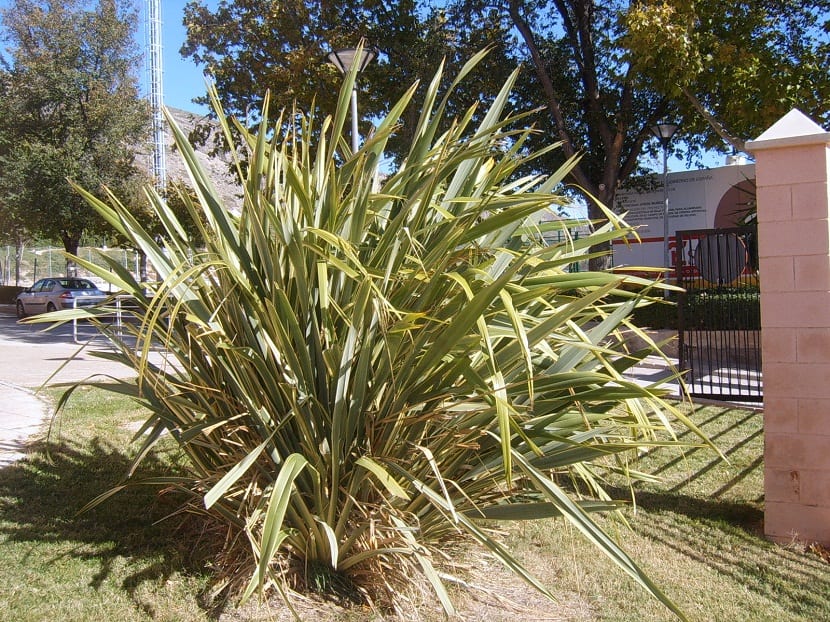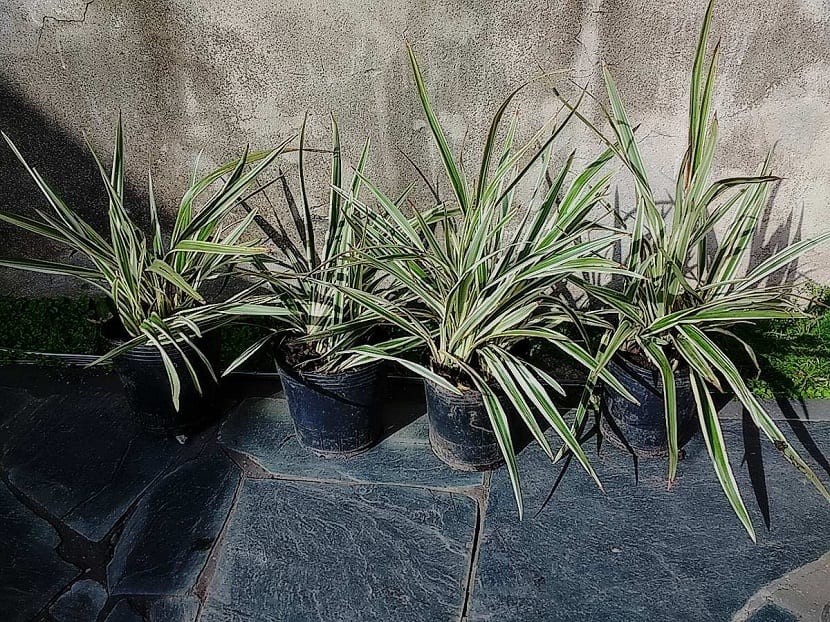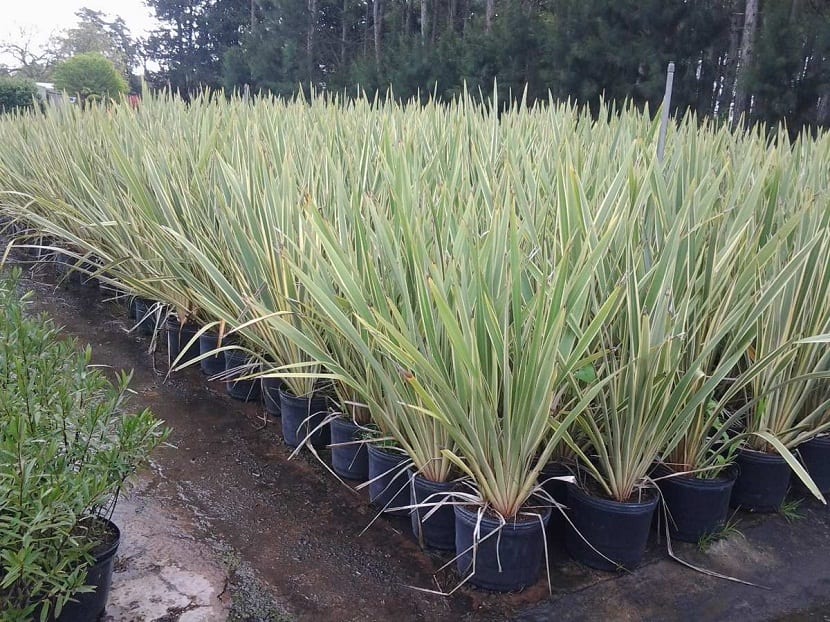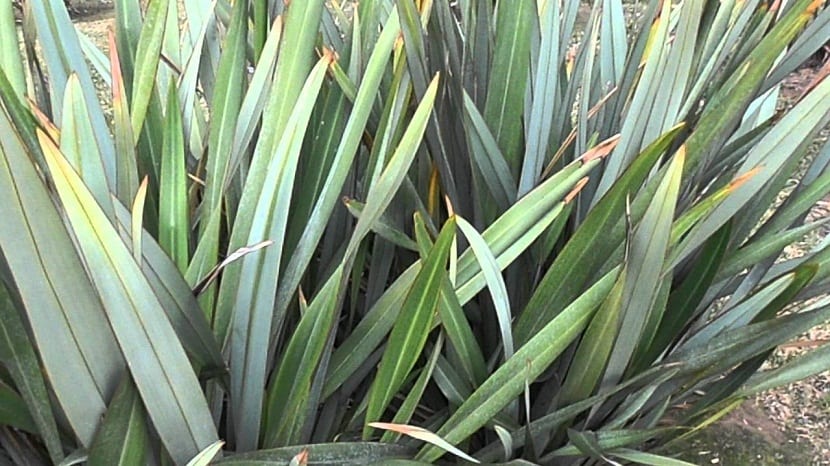
Phormium or Formio as it is also known, they are long-lasting plants that belong to the Agavaceae family and their scientific name is Phormium Tenax.
This plant comes from New Zealand and what is most striking about it is its abundant foliage. At first, formium was brought to different parts of the world due to its strong fibers, however term for becoming a plant for decoration.
Phormium characteristics

The formium is a herbaceous type plant which has quite hard, elongated and pointed leaves, their appearance is very similar to that of a sword and they can grow up to three meters in height and widen to almost 13 centimeters.
Most of the time its color is usually dark green, however there are some Phormium varieties grown for commercial purposes They have different shades of colors, such as light green, reddish and even a tan tone, also on the edge of the leaves and on the central veins they have some marks that can be yellow, pink, bronze or red.
The Phormium are also known in various parts as, New Zealand Flax, Fornium or New Zealand Hemp and as the summer season passes, this plant produces some clusters of flowers that have the shape of a kind of curved tube very similar to a candelabrum, these clusters exceed the height of the leaves.
Its flowers have a striking deep orange or red color, which after the fertilization process produce elongated, black fruits which have a large number of seeds inside.
This herbaceous plant can grow without any problem in soils that are kept quite humid. They are very resistant to very sunny climates and also in areas exposed to partial shade, it tolerates slightly cold climates, however in intense cold climates it needs protection.
Generally, these species of Phormium are used as decoration for gardens.
Phormium cultivation
By segment division
One of the procedures that are carried out for the cultivation of Phormium is the division, which should be done early in the first month of the fall season or at the beginning of spring.
The technique is carried out by separating the segments of the plant that have a part of a rhizome, root and at least one leaf.
Each of these servings should be placed in a separate container. The rhizome and root system it is placed in a hole in the middle of the container, while the leaves go above the ground.
The ideal soils for the proper development of the Fornio are those that have excellent drainage. It is best to water the segments of the plant that were divided frequently so that the soil remains moist, but without flooding the area where the formium is planted.
After they are the right size the divided segments of the plant must be transplanted, bearing in mind that they must be protected above all from the wind until their roots are firm enough.
By seeds

The ideal season for collecting the seeds of Formio It is at the end of the summer and autumn seasons, it is not necessary to apply any previous treatment and they can be sown immediately.
A seed is simply placed in a container, covered with a light layer of soil, and it is kept at about 21 ° C.
The most recommended is to water the land frequentlyIn order for it to maintain an ideal state of humidity, however, great care must be taken not to fill the soil with water. If everything is done correctly, the seed should start to germinate after the first 3-4 weeks.
Care of the Form
These are very hardy plants that they do not require great careHowever, if we want the plant to develop quickly and under ideal conditions, then we have to take into account the following:
Soil
The ideal soil to grow Fornio it has to have very good depth, and at the same time have an excellent drainage, in terms of its composition, it is preferable that it be of the sandy loam type. Likewise, they are plants that adjust quite well to soils of scarce nutrients that contain many stones, the most important thing is that they do not store water.
The climate
These plants grow best in areas that have oceanic climates, although they generally they can adapt to any type of climate.
The more rustic species withstand the wind quite well as well as the saline air. The Fornio has the ability to withstand temperatures of -6 and -10 ° C Without any kind of damage to their roots, they also support the intense heat that occurs in the first months of the summer season.
The situation
Ideally, plant them in a place where they receive enough rays of the sun, so that its colors become even more intense. The varieties that have less intense tones can be placed in places with semi-shade.
Irrigation
These plants prefer to be watered regularly especially in the months that favor its growth, that is, spring and summer. However, they are plants that resist dry seasons very well because their tissues have the capacity to store a large amount of water that they use as a reserve.
The ideal way to water this type of long-lasting plant that does not need abundant water is by dripping.
Phormium pests

They are not plants prone to attack by pests, although its exceptions include the well-known cottony mealybug and snails:
Cottony mealybug
These are housed in the supports of the leaves, one of the ways to fight against this type of pests is applying insecticidal products that are penetrating or systemic.
Sea Conches
Snails are a fairly common pest in gardening issues, in this case they produce various holes in the Fornio's leaves especially when they are still tender and folded. We can drive them away using helicides.
Hi! I would like to know how to differentiate variegated formium from its "dwarf" version that does not grow beyond 50 centimeters. I want to make sure I buy the plant that grows to over a meter, and that the nursery does not sell me the dwarf variety.
Can somebody help me? Thank you!
Excellent information, very complete and clear. Thank you very much for your valuable contributions.
Thank you very much for your comment, Pablo.
Excellent advice, embrace all stages of the plant.
Thanks Natalia!
It is a formium of approximately 10 years. It is in a very good place in the garden. However. I have noticed that its leaves are slightly yellowish. At this time it has good sun and a suitable temperature of around 22 degrees. Very good weather here in Mendoza.
Hi July.
Has it rained or watered more than usual in recent months? It could be overwatering.
Now if the yellowing leaves are just the oldest, it might be nothing. The leaves have a limited life expectancy, and it is normal for them to yellow over time.
I leave you a link to an article to see if it can help you: yellow leaves on plants.
Greetings.
Good afternoon, I have several formats and they have very few leaves, it does not prosper, it is as if the roots were rotten ... I can tear off the dry leaves without difficulty with my hands, I do not know what to do if you could give me some advice, I would appreciate it, thank you
Hello Ivan.
When that happens, it is because either it is receiving more water than it needs, and / or because it is planted in a very compact soil that has trouble absorbing and filtering the water.
The best thing in these cases is to remove it from where it is, and plant it in a pot -which has holes in its base- with very light soil, as a substrate for cacti, or this mixture: peat with perlite in equal parts.
Regards!
Very good information, thanks, but I would like to know how the sheets are worked to make baskets for example
Hi Patricia.
Thanks for your words 🙂
But answering your question, I can't help you, I'm sorry.
Greetings.